The Google Pixel 3 Review: The Ultimate Camera Test
by Andrei Frumusanu on November 2, 2018 11:00 AM EST- Posted in
- Smartphones
- camera
- Mobile
- Pixel
- Snapdragon 845
- Pixel 3
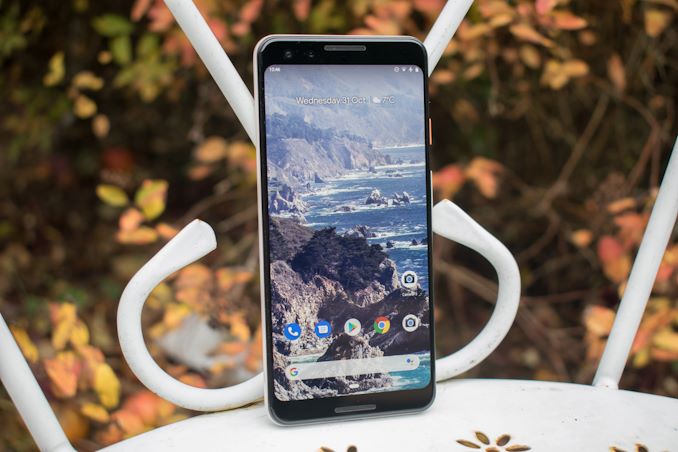
The Pixel 3 is Google’s third generation in-house design, meant to showcase the company’s own view of what an Android device should be, whilst fully embracing Google’s first-party software applications and services. The one thing Google’s Pixel phones have become synonymous with is the camera experience. The Pixel 3 continues this focal point of the line-up, and promises to be “the best smartphone camera”, period.
Alongside Google's forte, software, this year's Pixel family has pushed forward with a few hardware design choices, some of which we might have liked to have seen last year. The new units have updated panel technology, integrated wireless charging, and even fast wireless charging. Also now for Google, the Pixel 3 actually looks like a current flagship smartphone, compared to the Pixel 2 which did not at the time.
This year’s Pixel 3 phones hope to maintain the software advantages, doubling down on them with various new innovative features, especially on the camera side, whilst addressing the hardware aspects to be considered a true vendor flagship of a very competitive generation.
In this full analysis of the Pixel 3, we'll cover the hardware, the design, the software, and a detailed look to what makes users rave about the camera. We've tested over 18 current and former high-end smartphones worth of cameras to get to our conclusions, with all the analysis contained within these few pages. Commentary is of course, more than welcome.
It should be noted that for this review, unfortunately we only were able to get our hands on a regular Pixel 3, colored in 'Not Pink'. We do hope that sometime in the future we’ll be able to do a battery update on the bigger Pixel 3 XL once we’re able to source one.
Pixel Hardware and Design
In terms of hardware specifications, the new Pixel 3 family follows the many Android flagships trend of this year: at the heart of the phones, the Snapdragon 845 SoC is powering the devices. 2018 has been an excellent competitive year for Qualcomm and the S845 was able to take the performance lead among its Android competition. One thing to note here if you’re considering a Pixel device is that Google’s release schedule is very much out of sync with the silicon vendor’s SoC lineups - meaning users investing in a Pixel are buying a flagship phone whose silicon is by now 8 months old, and will most likely will be superseded by its successor in just a few months’ time. For those that want the leading edge, the Pixel 3 might be a short lived experience. However that doesn't detract from what is under the hood today.
| Google Pixel 3 Family | |||
| Pixel 3 (reviewed) | Pixel 3 XL | ||
| SoC | Snapdragon 845 4x Kryo 385 Gold (Cortex A75 based) @ 2.80 GHz 4x Kryo 385 Silver (Cortex A55 based) @ 1.76 GHz |
||
| GPU | Adreno 630 @ 710MHz | ||
| DRAM | 4GB LPDDR4X | ||
| Display | 5.5" AMOLED 2160 x 1080 (18:9) |
6.3" P-OLED 2960 x 1440 (18.5:9) |
|
| Size | Height | 145.6 mm | 158.0 mm |
| Width | 68.2 mm | 76.6 mm | |
| Depth | 7.9 mm | 7.9 mm | |
| Weight | 148 grams | 184 grams | |
| Battery Capacity | 2915mAh | 3430mAh | |
| Wireless Charging | Qi | ||
| Rear Camera | 12.2 MP, f/1.8, 27mm (wide), 1/2.55", 1.4µm, OIS, dual pixel PDAF |
||
| Front Cameras | Dual 8MP modules Regular f/1.8 75° & wide angle f/2.2 97° FoV lenses |
||
| Storage | 64 GB / 128 GB | 64 GB / 128 GB | |
| I/O | USB-C | ||
| Wireless (local) | 802.11ac Wi-Fi + Bluetooth 5.0 LE + NFC | ||
| Cellular | CAT 16 (1Gbps DL / 75Mbps UL), 5x DL CA, 4x4 MIMO, LAA, 256-QAM DL and 64-QAM UL |
||
| Splash, Water, Dust Resistance | IPX8 (Water resistant up to 1m) |
||
| Dual-SIM | nano-SIM | ||
| Launch Price | 64 GB: $799 / £739 / 849€ 128 GB: $899 / £839 / 949€ |
64 GB: $899 / not avail. / 949€ 128 GB: $999 / £969 / 1049€ |
|
Google also outfits the Pixel 3’s with relatively conservative DRAM and storage options. Both phones come with 4GB of RAM as well as a base storage variant of 64GB, with the option to buy a higher tier 128GB variant. Most of Google's competition are offering 6GB+ versions at similar pricing it should be noted.
In order to combat this low memory, one new hardware/software feature is an application memory management 'lowmmemorykiller' background application/daemon which applies various settings to keep certain software in memory for fast app loading times. Whilst in general I don’t put as much value into this as some other people do, I did however notice that in everyday use the phones did need to reload applications more often. There have been user reports already that the phones are struggling to keep things open and alive in memory. No doubt additional tuning of the memory management will be done through updates and the lifecycle of the unit.
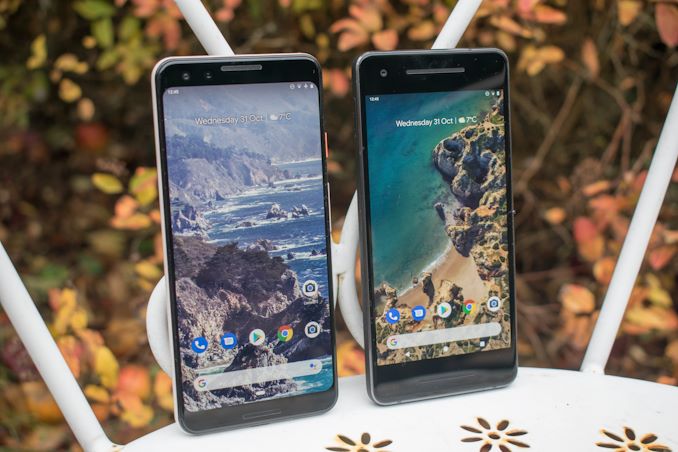
Pixel 3 (left) and Pixel 2 (right)
Design-wise, the Pixel 3 is a big upgrade over the Pixel 2. Gone are the 2015 top and bottom bezels, and instead we find a more contemporary design with an elongated 18:9 (or 2:1) aspect ratio screen, vastly increasing the screen-to-body ratio of the phone. The screen is still an OLED with an FHD+ resolution (2160 x 1080 pixels) – though this year it seems that Google has split suppliers between the small and XL variants, with the Pixel 3 panel now being manufactured by LG while the Pixel 3 XL uses a Samsung panel.
On the front of the device, we luckily don’t need to go into any big controversial discussions about a notch as the small Pixel 3 (As opposed to the 3XL) doesn’t have one. What is new for both of the Pixel 3 smartphones is a secondary wide-angle front-facing camera, allowing for wider selfie shots or simply a wider field of view when doing front video recording or communications, which is actually quite handy.

Pixel 3 (left) and Pixel 2 (right)
On the back of the phone, we also see a big design change: Google has switched over from a metal unibody design with a top glass cut-out, to a full glass back panel. Google still maintains the same contrasting glossy glass design feature at the top of the phone, and achieves this by chemically etching the bottom part of the glass to a matte finish.
The matte feel of the glass is extremely similar to the design of the OnePlus 6’s etched models, and it does stand out as a completely different feel than one might be used to from glass phones. It really helps with the grip, and totally avoids fingerprints. My only issue here is that Google didn’t extend this finish to the very edges of the glass back, as well as leaving out a 1mm ring around the fingerprint sensor, the latter whose shadows on the glass looks very odd and a bit cheap.
Going for a glass back allows Google to now adopt wireless charging, and supports the Qi standard. The phone also supports fast wireless charging up to 10W. Unfortunately again, it seems that Google is only allowing this on certified chargers, thus not really adhering to the Qi fast-charging standard. This means almost all existing 'fast' wireless chargers will be limited to 5W.
Google bundled its own Pixel Stand wireless charging pad with the reviewer kits (It's not bundled with commercial units), and it works as well as it says on the box. One big hiccup I noticed is that the Stand will only accept certain USB-C chargers with PD at certain voltages – so users are restricted to the bundled power supply as well as a limited number of USB C PD chargers to even power it on at all.
It should be noted that the glass on the rear has some flex even under light pressure, and I can hear it touching the internals (charging coil and battery). This was one of the first things I noticed when unboxing the phone, and it makes it feel a lot less well built as for example glass backs from Samsung or Apple.
The camera on the Pixel 3 sees a minor sensor upgrade from the Sony IMX362 to the IMX363 – both units are 12.2MP sensors with 1.4µm pixel pitches. The aperture is also the same at f/1.8. There are no secondary modules here, and Google prefers to fall back to software innovation for improving zoomed in pictures: the Pixel 3 exclusively ships with a new “Superzoom” mode that promises to improve digital zooming, more on this later in the camera section where we’ll have a very big comparison with most of this year’s flagship devices.
The left side of the phone is bare of any buttons, and we find the power and volume rocker on the right side. Google accentuates the colour of the power button, on my “Not pink” pink unit this is a very neon orange that just doesn’t pop up in images as much as it does in real life.
On the top of the phone we find a microphone hole.
The bottom sees the single nanoSIM slot as well as the USB-C charging port. Like on the Pixel 2, the Pixel 3 units do not offer any headphone jack. One argument for the removal of the headphone jack, beyond the by now debunked claim that it offers larger internal space dedicated to batteries, is that it allows for better audio quality. Indeed if headphones have their own DACs built-in, then they can be calibrated to the sound profile of the individual headphones, instead of relying on the phone to serve a correct frequency response. That being said, unfortunately the USB-C earbuds bundled with the Pixel 3 are among the worst I’ve ever listened to and can be easily described as complete rubbish. I would easily choose USB-C earbuds from any other primary smartphone vendor.
In the rest of this review, we cover the following:
- Introduction and Design (this page)
- System Performance
- GPU Performance
- Display Measurements and Calibration Testing
- Battery Life and Power
- Camera pt 1: Daylight with SuperZoom and Scenic
- Camera pt 2: Daylight with Dynamic Range
- Camera pt 3: Low Light and NightSight
- Camera pt 4: Video Recording and Speaker Evaluation
- Pixel 3 Conclusion


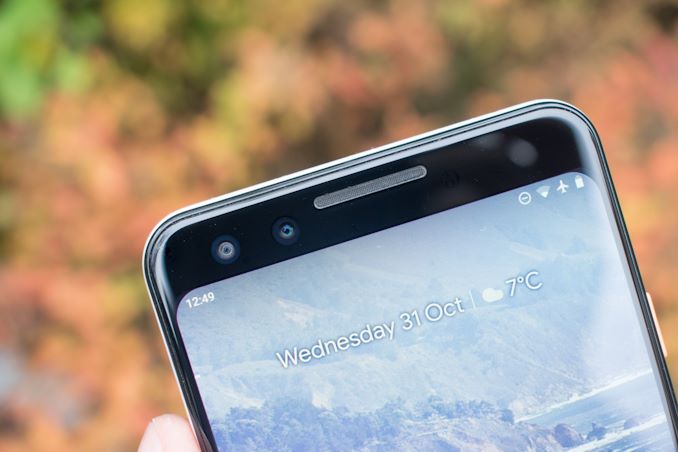


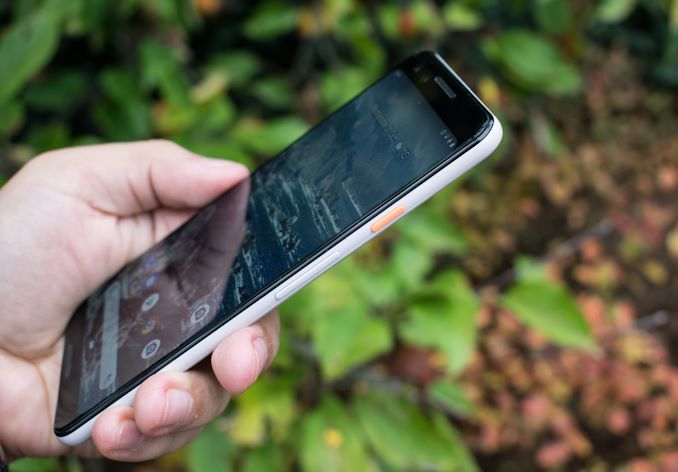
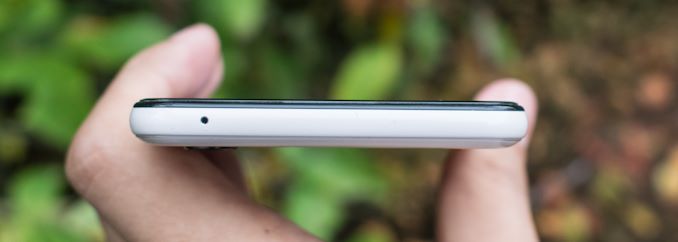









135 Comments
View All Comments
Impulses - Friday, November 2, 2018 - link
Meh, their memory management is still over-aggressive here... Some of the instances I've seen of apps getting killed after opening the camera don't even happen on my OG Pixel with the same amount of RAM.Arbie - Friday, November 2, 2018 - link
Is anyone actually in favor of not having a headphone jack?I get it that you *can* make the phone very slightly thinner without one; OTOH keeping the same thickness *can* permit longer battery life, which everyone wants. I also understand that you *can* put a superlative DAC in a dongle, for audiophiles. But that can be done anyway.
Killing the jack seems to bring no benefit to the majority of folks, and is going to alienate a lot of them. So - why? Such a change can't just be due to fashion.
zanon - Friday, November 2, 2018 - link
Yes, and it blows my mind that so many so-called tech enthusiasts are actually actively against improvements to archaic technology. Wires suck, they get snagged on things, they limit movement, they act as antennas that pick up things like GSM sync signals, etc. We used them because that was the best that could be done in the 70s and 80s. But that's not the case now. They offer literally zero inherent advantages except one: the antenna part, they can in principle (and in a few phones over the years) act as physical antennas for classic radio broadcasts. But that simply hasn't been that motivating to the developed world market in a long time, as evidenced by the fact that it's not a major advertised universal Android feature and Apple never bothered with it at all.Beyond that wireless should be fine, and I think people confuse implementation trouble due to companies doing a bad job or market immaturity with real problems. Audio quality is not an issue, Bluetooth 5 has plenty of bandwidth for even lossless audio (and 256 AAC let alone Sony's fat codec is transparent anyway). Run time is fine, once something gets to 10-18 hours+ on a charge that meets what I'd ever listen to in a single session with no breaks (when it could be charged). Symmetric encryption is cheap and easy now and means it's as secure (or more given TEMPEST) as wired. Some stuff is still lacking, like easy switching between multiple wireless sources, but that's not a fault of the inherent tech so much as there hasn't been any real demand for it yet because wires have hung on so damn long. We're already seeing way more cool adapters for existing products get released due to increased demand and so I expect the market to work it's typical magic.
I'm delighted to see that relic go. I have no nostalgia towards it anymore then I do towards 8-track or MMX or 10base ethernet or whatever.
cfenton - Friday, November 2, 2018 - link
"Beyond that wireless should be fine, and I think people confuse implementation trouble due to companies doing a bad job or market immaturity with real problems."But those are real problems for everyday use. Just because the technology is theoretically there doesn't mean it works well in practice. I use wireless headphones with my Galaxy S7 in the winter because I hate threading a cord through my coat. About 20% of the time my headphones only connect for voice calls, but not media. I have to either fiddle with menus, or turn them off and on again. I'm using a $100+ over-ear set, not some cheap $20 ear-buds from a no-name brand. It's annoying enough that I still use my wired headphones at home, and outside in the summer.
I've heard Apple's solution is a lot better, but I don't have an iPhone, and don't particularly like Beats.
If getting rid of the headphone jack added anything to the phone, or somehow made bluetooth better, I'd be all for it. But it seems to add nothing. Samsung has shown with the Galaxy S9 that you can make a very nice modern phone and still have room for a headphone jack. So why not have both until the real world problems with wireless get worked out?
zanon - Friday, November 2, 2018 - link
But how do you think we have *ever* gotten from A to B there? I'm only in my late-30s so not really old, but even so I can still remember most of the PC era and I can't remember any significant technology that didn't take many years to get refined, to fill out niches, to unambiguously beat what it replaced. Not just in hardware but often even in software, take audio and video codecs for example, there have been a number of replacement cycles where the technically superior standard spec for a while was inferior in practice to highly refined encoders for the previous generation.At some point somebody has to get the ball rolling and there will be a few generations where people just have to deal with compromises. The only way we've ever gotten great tech is for a real market to get established and then iterated upon. In the case of BT audio, in just the last year I've seen more improvements in things like BT adapters then like the previous 5 years at least. Just a few days ago a bunch of BT5 gen 2 refined ones came out at lower prices and better performance.
>"So why not have both until the real world problems with wireless get worked out?"
Because that has never, ever worked. If the old thing is still available major players just use the old thing. Inertia is very powerful. Somebody sometime has to bite the bullet, and given the realities of mass manufacturing you can't "have all the problems worked out" in version 1.0. Version 1.0 is always going to have issues. But you can't get ver2 or ver3 without going through 1.0 first. In this case Apple has shown it can be done very well and with more vendors going that way there is now a clear market of people ready to spend money on it and 3rd parties are starting to react and iterate. Now we can look forward to having way better stuff in another year or 2, whereas if they had all put it off then there is no reason to expect that'd be the case anymore then it was the last decade.
If you really don't want to be on the bleeding edge there then no problem, just get an older device! Mobile lasts a lot longer now, Apple already supports their stuff 5+ years and Google is getting better too. But those of us who like to live nearer the edge have always had to deal with that edge being rougher then those who follow. Somebody has to go first though.
porcupineLTD - Saturday, November 3, 2018 - link
Nice mental gymnastics to justify an idiotic trend.zanon - Saturday, November 3, 2018 - link
Nice brainless technophobia from a luddite lol. Why don't you go back to your retro forum hole and cling to your VGA and CRT claiming they're the best ever and all this flatscreen stuff is a sheeple fad?Impulses - Saturday, November 3, 2018 - link
CRT still haven't been surpassed for some fast refresh applications... And likely never will by LCD, OLED might get there.rabidpeach - Friday, July 31, 2020 - link
it's not technophobia! you can get wired speakers that are sufficiently sensitive that are much bigger than the bs wireless earbuds you insert. likewise the full size wireless bose whatevers. it's not a big range of headphones but there is a sweet spot of larger phones that can be driven by mobile device. it exzists.cfenton - Saturday, November 3, 2018 - link
But we're not on version 1.0 of Bluetooth, we're on version 5.0 and it's still not great. Well, I don't have any 5.0 stuff, so maybe they finally got it right, but version 4.0 is still pretty inconsistent. If wireless worked as well as wired, I'd be all for it, but in my experience, it doesn't yet.As for transitions not happening unless forced, I'm not sure that's true. Lots of people use Wi-Fi even though wired ethernet still exists. It's only in the last five years or so that laptops have been shipping without ethernet ports, and desktops still have them. Again, I'm not against having good wireless tech, I just don't think it's 100% there yet and removing wired connections doesn't seem to add anything to the phone.